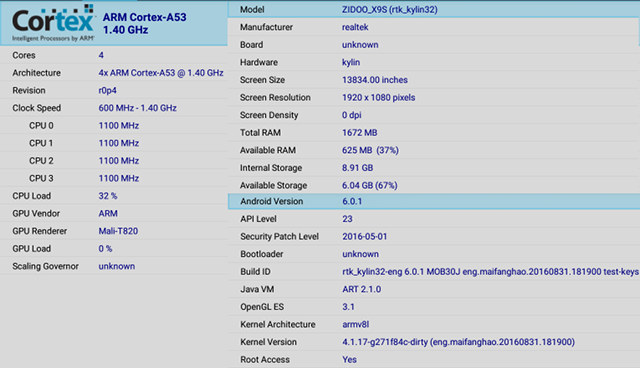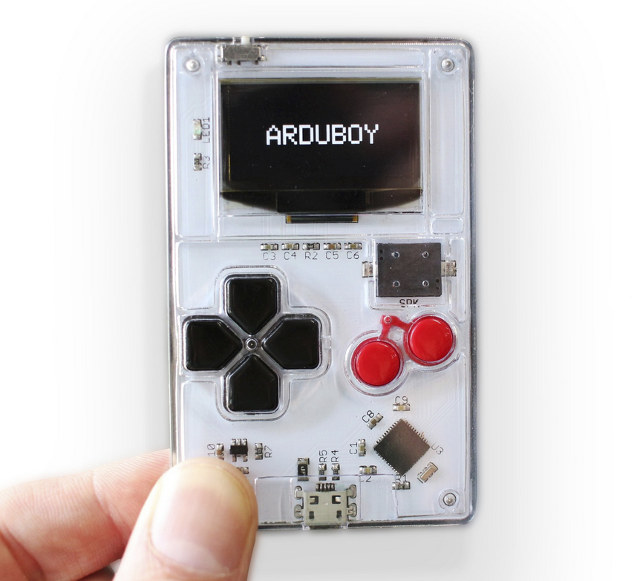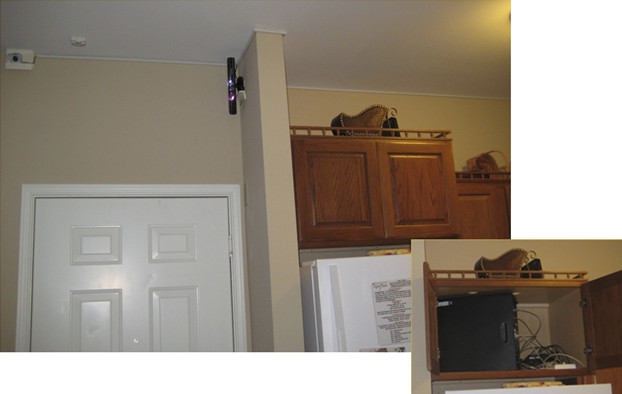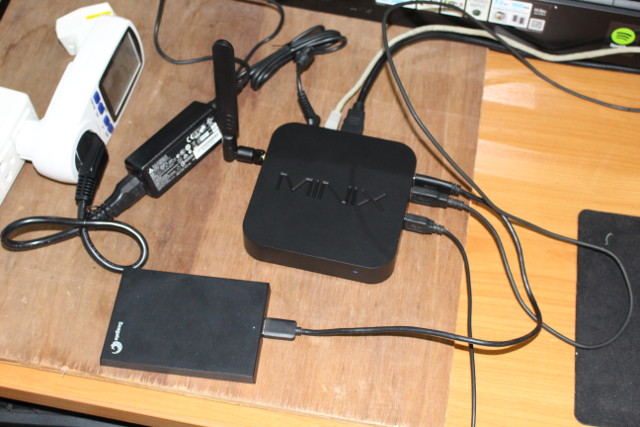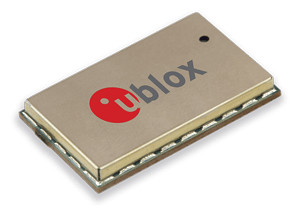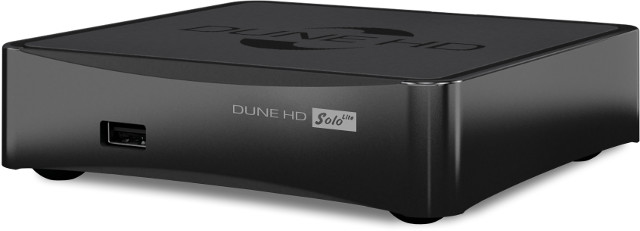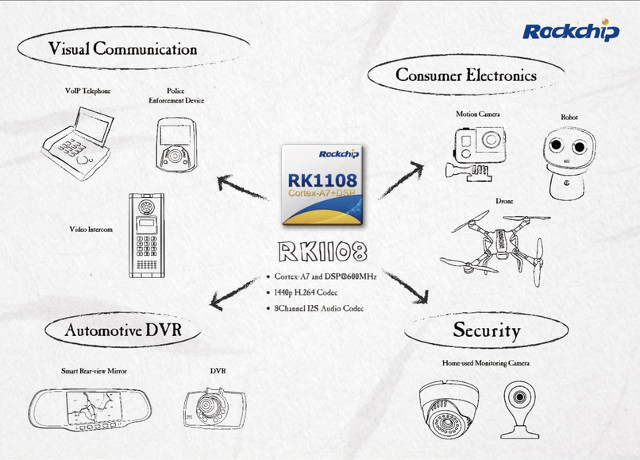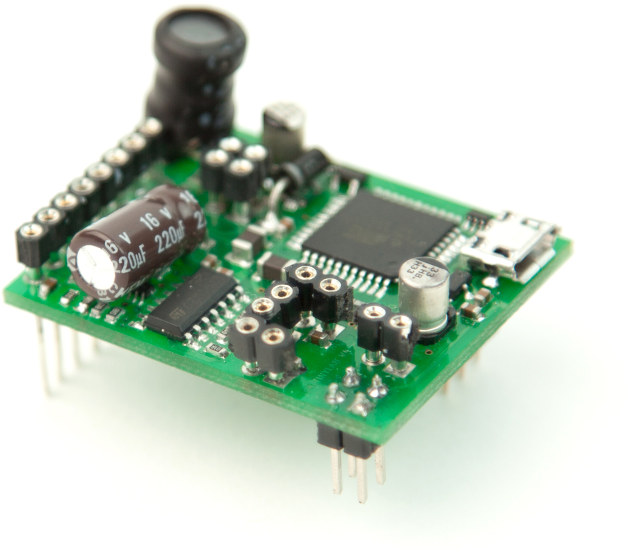Zidoo X9S is the first Android TV box based on Realtek RTD1295 quad core Cortex A53 processor that I’ve received for review. So in this post, I’ll show some system information with CPU-Z, and Android & OpenWrt Settings, and run typical Android benchmarks such as Antutu 6.x, Vellamo, and 3Dmark. Zidoo X9S / Realtek RTD1295 Android System Info CPU-Z detects Realtek RTD1295 is a quad core ARM Cortex A53 processor clocked between 600 MHz and 1.4 GHz with an ARM Mali-T820 GPU, and uses an unknown governor… But in adb shell, tje command “cat /sys/devices/system/cpu/cpu0/cpufreq/scaling_governor” reports an ondemand governor is used. The system runs Android 6.0.1 on top of Linux 4.1.17 (I think it’s the first time I see a Linux 4.x kernel used in a TV box…), and with 1920×1080 resolution. Total RAM is shown to be 1672 MB, most probably because some RAM is reserved for the GPU […]
ArduBoy Arduino Compatible Portable Game Console Sells for $39
Ardubox feels like the little brother of PocketCHIP portable & hackable game console with its transparent case, but instead of running Linux on a 32-bit ARM processor, Ardubox is based on the same Atmel ATmega32u4 MCU used in Arduino Leonardo & Micro boards. Arduboy specifications: MCU – Atmel ATmega32u4 AVR MCU with 32KB flash, 2.5KB RAM, and 1KB EEPROM Display – 128×64 1-bit OLED display USB – 1x micro USB 2.0 port for power and programming User Inputs – 6x momentary tactile buttons Audio – 2 channel Piezo Speaker Misc – 1x LED Battery – 180 mAh Thin-Film Li-Po battery good for over 8 hours Beside the Arduino IDE, The board can also be programmed with Codebender, GCC & AVRDude. There’s also a fairly long list of games to play with, and it can be hacked as a virtual business card, a USB mouse and keyboard, a synthesizer, and more. […]
Sensors Predicting The Future – Elderly Persons Fall Prediction and Detection with Kinect, Webcams and Microphones
Wearables can be used your young children or elderly persons to monitoring their locations or health, and one use case, especially for old age persons, is to detect falls. However, it’s quite possible they don’t like it and/or not always wear it, so the Center for Eldercare and Technology of the University of Missouri designed a system based on Microsoft Kinect, two webcams, and microphones in order to detect falls, and even predict falls by analyzing gait, i.e. the pattern of movement of the limbs. The picture above shows at least part of the hardware setup with the Kinect, a webcam, and a PC tower doing the processing stored in a cupboard. Fall detection algorithms are relying on the microphone array, Microsoft Kinect depth camera, and a two-webcam system used to extract silhouettes from orthogonal views and construct a 3D voxel model for analysis. Passive gait analysis algorithms are for […]
MINIX NEO Z83-4 mini PC Review – Part 2: Windows 10 and Benchmarks
I’ve listed specifications and posted photos of MINIX NEO Z83-4 mini PC in the first part of review, and while NEO Z83-4 is yet another Intel Atom x5-Z8300 device, it’s clear the company has made specific efforts for the thermal design with a large heatsink and aluminum bottom cover, and provided a solid 12V/3A power supply. So in the second part of the review, I’ll check how Windows 10 performs in the device, and run some benchmarks to compare it to other low power Intel mini PCs. MINIX NEO Z83-4 Setup & System Information If you’ve connected USB mouse and keyboard, HDMI and Ethernet, a USB 3.0 hard drive to the USB 3.0 port, and the power cord. Pressing the power button on the right side will boot the device. A typical boot will take around 30 seconds to the desktop. My system was already configured with Z83-4 user, possibly […]
u-Blox Unveils SARA-R4 LTE Cat M1 and SARA-N2 NB-IoT Modules for Professional IoT Applications
While I’ve mostly read about SigFox and LoraWan solutions for long range, low power, and low bitrate communications for the Internet of Things so far, there are many active of planned LPWAN standards for IoT applications, and 3GPP Release 13 standard stipulates two LTE LPWAN standards, namely LTE Cat M1 (eMTC) and LTE Cat NB1 (NB-IoT), with the former supporting 1 Mbps downlink and uplink peak data rates, and the latter 250 Kbps downlink, and 250 Kbps (multi-tone) or 20 Kbps (single tone) uplink data rates. U-Blox has released modules for both standard with SARA-R4 LTE Cat M1 and SATA-N2 NB-IoT modules. SARA-N2 Cat NB1 cellular module specifications: LPWAN Connectivity – 3GPP Release 13 NB1; NB-IoT bands: 5, 8, 20; downlink: 227 Kbps, uplink: 21 Kbps Positioning – GNSS via Modem Interfaces – 1x UART, 1x SPI, 2x GPIO, 1x DDC(I2C) for GNSS Features – Antenna supervisor, embedded IPv4 & […]
Dune HD SOLO Lite is a Cheaper Sigma Designs SMP8758 based 4K Media Box
Launched at the very end of last year, Dune HD SOLO 4K media player and NAS with Sigma Designs SMP8758 processor, a 2.5″ SATA bay, and a DVB-T2 tuner has high end specifications, but the price is also steep at 349 Euros inc. VAT. So the company has come up with a newer and cheaper version, Dune HD Solo Lite without the SATA bay, Z-wave support, nor the tuner card, but that keeps many of the same features, and sells for 199 Euros inc. VAT (MSRP). Dune HD Solo Lite specifications: SoC – Sigma Designs SMP8758 dual core Cortex A9 processor @ 1.2 GHz with an ARM Mali-400 GPU and VXP image processing engine System Memory – 1GB Storage – 4GB flash for firmware, SD card reader Video Output – HDMI 1.4b up to 1080p60 / 4K30 (including 23.976, 25, 29.97, 50, 59.94Hz refresh rates), and composite video Audio Output […]
Rockchip RV1108 Cortex A7 + DSP SoC is Made for Audio & Video Conference and Recording Applications
[Update May 2017: Rockchip has renamed RK1108 to RV1108.] Rockchip has introduced RV1108 ARM Cortex A7 SoC with a 600 MHz DSP targeting visual communication, consumer electronics, automotive DVR, and security applications thanks to its 8-channel I2S audio codec and 1440p H.264 video encoder and decoder. Detailed specifications can be found on the official Rockchip Wiki: CPU – Single-core ARM Cortex-A7 Core processor with NEON and FPU, 32KB/32KB L1 I-Cache/D-Cache, Unified 128KB L2 Cache, and Trustzone Video/Image DSP – Up to 600 MHz, 32KB I-TCM and 32KB I-cache, 128KB D-TCM Memory 12KB internal SRAM DDR3/DDR3L interface – 16 Bits data width, 1 ranks (chip selects), up to 512 MB RAM NAND Flash Interface – 8-bit async NAND flash, 16-bit hardware ECC eMMC Interface – Compatible with standard iNAND interface, eMMC 4.51 standard. SD/MMC Interface – Compatible with SD 3.0, MMC 4.41 System Component 2x 64-bit timers with interrupt-based operation 8x […]
Espotek Labrador is s $25 5-in-1 Lab-on-a-Board with Oscilloscope, Waveform Generator, etc… (Crowdfunding)
We’ve already seen ultra cheap (and low end) electronics lab tools like DSO138 oscilloscope kit for $23, or the $5 USB123 USBee AX logic Analyzer, but EspoTek Labrador combines 5 electronics lab equipments into a single board that claims to act as an oscilloscope, a waveform generator, a variable power supply, a logic analyzer and a multimeter for just $25. EspoTek Labrador specifications and key features: MCU – Atmel ATXMEGA32A4U 8-bit AVR MCU @ 32 MHz with 32KB flash, 4KB SRAM, and 1024 bytes EEPROM Functions 2 channels oscilloscope up to 750ksps, ~100kHz bandwidth, -20 to +20 V range 2 channels waveform generator up to 1 MSPS supporting sinusoidal, square, triangular, sawtooth, and arbitrary waveforms 4.5 to 15V power supply up to 1.5W max 2 channels logic analyzer up to 3 MSPS per channels Multimeter with voltage, intensity, resistance, and capacitance functions USB – micro USB port to connect to […]


